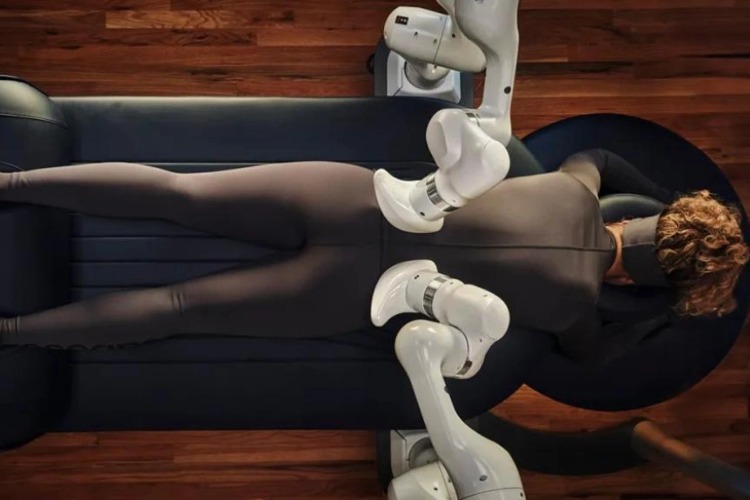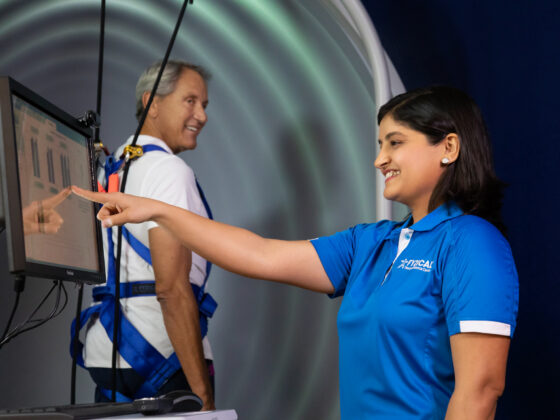In a world where innovation is the pulse of progress, the realm of massage therapy is experiencing a transformative wave fueled by technology. Picture the soothing touch of a skilled therapist intertwined with cutting-edge tools and advancements that elevate the healing experience.
Traditional techniques, cherished for their holistic benefits, are now harmoniously blending with modern devices, offering practitioners new dimensions in care. From smart massage chairs equipped with AI algorithms that tailor sessions to individual needs, to apps that facilitate real-time communication between clients and therapists, the integration of technology is enriching the art of massage in unprecedented ways.
This evolution not only enhances the efficacy of treatments but also empowers practitioners and clients alike, fostering a deeper connection to well-being in an increasingly fast-paced world. In this article, we will explore the myriad ways in which technology is metamorphosing traditional massage therapy, creating a richer tapestry of healing possibilities.
The Evolution of Massage Therapy: A Historical Perspective

The journey of massage therapy, a practice steeped in ancient traditions, reveals a fascinating interplay between cultural evolution and healing methodologies. Originating in civilizations such as those of China and India over 5,000 years ago, where holistic healing was paramount, massage techniques were meticulously documented in texts like the Ayurvedic scriptures and traditional Chinese medicine treatises.
As centuries unfolded, these practices transcended geographical boundaries, adapting and blending with local healing customs—from the Swedish movements popularized in the 18th century to the deep tissue techniques that emerged in response to industrialization’s toll on the body. Each era contributed layers of complexity and innovation, resulting in diverse modalities that reflect humanity’s quest for wellness.
Fast forward to the present, where cutting-edge technology invigorates these time-honored techniques, reimagining the massage experience while honoring its rich heritage. Through the integration of resources like electric massage chairs, apps for personalized sessions, and virtual reality environments, the ancient art of touch is not only preserved but also redefined, promising a future that bridges the old with the new in unprecedented ways.
The Role of Technology in Modern Wellness Practices

In today’s fast-paced world, technology seamlessly integrates with traditional wellness practices, transforming how we experience and understand massage therapy. From mobile apps that allow users to schedule appointments at their convenience to state-of-the-art massage chairs equipped with sensors that tailor strokes to individual needs, the landscape of therapeutic touch is evolving.
Virtual reality and augmented reality are now being employed to enhance relaxation and mindfulness, immersing clients in soothing environments that enrich the massage experience. Furthermore, wearable technology provides therapists with valuable insights into a clients physical condition, ensuring that each session is not only restorative but also aligned with their health goals.
As the fusion of technology and massage therapy continues to flourish, practitioners have unprecedented tools at their disposal, creating a richer, more personalized experience that honors the art of touch while embracing innovation.
Innovative Tools and Equipment in Massage Therapy

In the ever-evolving landscape of massage therapy, innovative tools and equipment are redefining the way practitioners approach healing and relaxation. From advanced electrotherapy devices that stimulate muscle recovery to cutting-edge infrared heating pads that enhance circulation, these technologies offer a precise edge that was previously unattainable.
Imagine a session where the therapist utilizes a smart massage chair equipped with built-in sensors, adjusting its settings in real-time based on client feedback. Meanwhile, handheld ultrasound devices’re being employed to target deep tissue pain with remarkable efficacy, blending tradition with modern science.
As we embrace these innovations, the traditional massage experience morphs into a seamless interplay of the human touch and technological sophistication, promising not just relief but a holistic rejuvenation that speaks to the demands of contemporary wellness.
Conclusion
In conclusion, the integration of technology into traditional massage therapy techniques is revolutionizing the way therapists approach healing and wellness. From advanced tools that enhance the precision of techniques like 스웨디시 massage to the use of apps that facilitate scheduling and customer feedback, technology is streamlining workflows and improving client experiences. As these innovations continue to evolve, they not only empower therapists with enhanced skills and insights but also provide clients with more personalized and effective treatments.
Ultimately, the harmonious blend of technology and traditional practices holds great promise for the future of massage therapy, paving the way for improved health outcomes and enriched therapeutic experiences.


